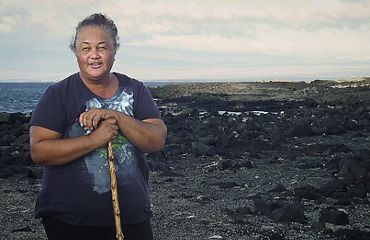.jpg?crop=0%2C201%2C2016%2C1108&wid=1300&hei=715&scl=1.5507692307692307)
Working with Partners to Restore Coastal Habitat
The actions we take today will impact the condition of Hawai'i’s reefs and fisheries…in our own lifetimes and long into the future.
Where We Work
Places We Protect
No results are shown. To see results, turn on the toggle switches in the legend.
- He'eia
-
He'eia
Centering Biocultural Practices
The Native Hawaiian stewardship practices that maintained ecosystem health while providing food for up to a million people for centuries are being perpetuated at He‘eia. TNC is supporting this grassroots effort, which is simultaneously improving ecosystem health, increasing the local food supply, and building Indigenous knowledge.
Image © John DeMello
- East Maui
-
East Maui
Centering Biocultural Practices
Communities throughout remote East Maui continue to perpetuate the Native Hawaiian culture and traditions and rely on their natural resources for sustenance. TNC is helping to improve management of the intertidal and marine resources they rely on for protein, including limu (algae), fish and ‘opihi (limpet).
Image © Bob Bangerter
- Olowalu
-
Olowalu
Connecting Mauka and Makai
West Maui habitats are becoming increasingly degraded from climate impacts, including droughts, storms, fires, sea-level rise and marine heatwaves. At Olowalu, TNC works with partners to reduce coastal flooding and sediment flows onto the area’s reef through habitat restoration and improved catchment systems.
Image © Lyle Krannichfeld
- Kealakekua
-
Kealakekua
Connecting Mauka and Makai
Today, this once remote area is a mecca for visitors enticed by cultural and historic sites and unparalleled marine life. TNC supports a coalition of more than two dozen public and private partners collaborating to strengthen natural resource and tourism management and to restore the coral reefs that support its marine life.
Image © iStock/redtea
- Ka‘ūpūlehu
-
Ka‘ūpūlehu
Strengthening Fisheries Management
This historic community has long perpetuated Hawaiian stewardship of ancestral marine resources and is now pursuing a formal collaborative management agreement with the state. TNC provides tools, science, and other support for their efforts, and most recently, facilitated development of their sustainable fisheries management plan.
Image © John De Mello
- Kīholo
-
Kīholo
Strengthening Fisheries Management
Despite lava flows covering much of the ancient Kīholo fishpond, remnants stand today, demonstrating the resilience of this Native Hawaiian aquaculture system. TNC partnered with ancestral caretakers of the area to restore the pond and estuary system, so it once again provides for the community.
Image © Christine Shepard
TNC works at coastal sites and across ahupuaʻa, supporting community groups and government agencies to develop and implement robust restoration plans that bolster the resilience of marine environments and enhance coastal protection. The efforts utilize the latest tools and science, traditional knowledge and practices, and local expertise to foster culturally grounded, place-based management and to re-establish healthy mauka-makai connections. With strong community leadership, the support of volunteers, academic institutions and government partners, and a track record of successful results, the efforts have attracted over $20 million in federal funding from the Bipartisan Infrastructure Law and Inflation Reduction Act.
Quote: Leina‘ala “Aunty Lei” Lightner

We’ve been hearing from people that the area is starting to look like “old Hawai‘i.”
- At Ka'ūpūlehu and East Maui, we are working to build the resilience of the nearshore reefs that sustain Hawaiian culture, unique marine life and coastal communities.
- At Kīholo Preserve, we are restoring an ancient coastal fishpond—a traditional Hawaiian aquaculture system that provides for local food production, and absorbs sediments and nutrients, preventing them from flowing onto the reef.
- In Heʻeia, where partners are working to restore habitats and stream flows across an ahupua‘a, we provide scientific expertise to inform their efforts and help to restore traditional agriculture, including the lo‘i kalo (taro fields) that once dominated the wetlands, absorbing the sediments and nutrients that would otherwise flow onto Kāneʻohe Bay’s reefs.
- At Kawela on Molokai, we work with local, state, and federal partners to reduce upland erosion through improved ungulate management. In addition to healing an important watershed, the effort benefits native forest and shrublands, coastal reefs, and the people who depend on them. Watch a video to learn more.
- At Olowalu on Maui, we support a broad coalition working to reduce erosion through improved fire and ungulate management, to improve sediment capture systems, to strengthen reef management, and to identify coral species and locations for restoration to build the reef’s resilience.
- In South Kohala on Hawaiʻi Island, we are working with a coalition of public, private and community groups to build climate resilience across an area the size of Molokai to reduce stressors to nearshore reefs and fisheries.
Advancing Conservation Beyond These Places
Increasing evidence shows that these locally based collaborative efforts improve coastal and reef health and sustainability. Here in Hawaiʻi, they are also helping to perpetuate Hawaiian culture and increase local food security. That's why we also support dozens of community groups working to restore coral reefs, fisheries, Hawaiian fishponds and rare anchialine pools across the islands through local peer learning networks where members share knowledge, experiences and strategies to enhance their restoration and management and accelerate conservation along island coasts.
As the Ōlelo No‘eau reminds us, ʻAʻohe hana nui ke alu ‘ia. (No task is too big when done together by all.)





